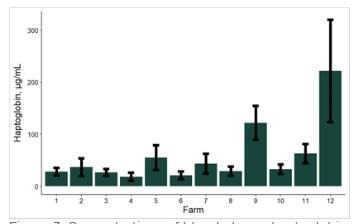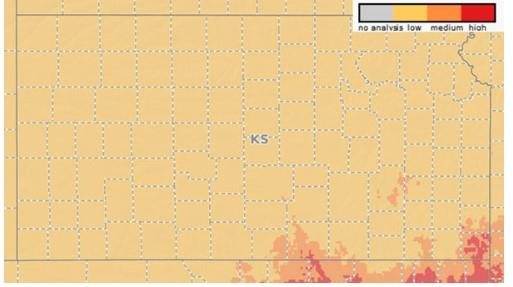By Adrian A Barragan

Maternity Pen. Photo credit Penn State Extension
The transition period is a challenging period for dairy cows that encompasses the 3 weeks before calving until the 3 weeks after calving. During this period, dairy cattle experience physiological challenges, such a drop in dry matter intake and systemic inflammation. If cows are not properly managed, they will not be able to cope with these challenges, compromising their health and performance. There are several best management practices that must be in place for dairy cows to have success during this period. In this article, I would like to discuss some new findings from current research in our lab on anti-inflammatory management.
Most of the previous research studies have focused on using anti-inflammatory strategies in the first hours after calving. These strategies have shown to have benefits in cow health, production, and fertility, but most of the studies only found positive effects on multiparous cows. Primiparous cows, these are cows that are on their first lactation, are the group of animals that have the highest systemic inflammation and stress around calving, and often are the group of animals that have the greatest incidence of diseases after calving. There are other groups of animals that also experience a higher degree of inflammation around calving such as cows that had a difficult calving and over conditioned cows (cows that are ≥3.75 points in body condition score). In the search for better management strategies to address these challenges in high-priority groups of animals, our lab designed targeted preventive treatment strategies.

Dairy cow during labor. Photo credit: Adrian Barragan, Penn State University
It has been shown that the systemic inflammation during the transition period does not begin at calving, but instead begins several weeks before. Therefore, we developed an anti-inflammatory treatment regimen with two common non-steroidal anti-inflammatory drugs (NSAIDs): aspirin and meloxicam. It is worth to mention that these two drugs are not approved to be used in dairy cattle, and producers must talk to their veterinarians before considering the use of these products in their herds.
In order to be applicable, it is important to develop strategies that not only address physiological challenges in the animals but also fit farm logistics. This treatment protocol included one single oral administration of aspirin (125 g/cow; 4-480 grain boluses) or one oral administration of meloxicam (1 mg/kg) at 14±3 days before the expected calving date. This single dose approach is not only economical, but is also easy to implement in dairy farms since it occurs in a common time for moving cows into a pre-fresh group, which often is used for restraining cows and perform other practices such as vaccination or placing activity monitors.
The goal of this approach was to improve health and performance in high-priority cows, so let’s take a look at our preliminary results. In this trial, we treated around 80 animals per group, and we assessed their milk yield, disease incidence, and reproductive performance in the subsequent lactation. Our main findings were related to milk yield and health of enrolled animals. We found that primiparous cows treated with meloxicam produced almost 10 pounds of milk per day more in the first 100 days in milk compared to placebo cows. These would be around 1,000 pounds of milk total per treated cow. We also found positive effects of treatment with either aspirin or meloxicam on stillbirth rate, where treated cows had a 20-percentage point decrease on the incidence of stillbirths compared to non-treated cows. We also found positive effects of aspirin treatment on uterine health at 14 days in milk, where aspirin treated cows had lower incidence of clinical metritis.
These results are encouraging and put some emphasis on the importance of having an optimal pre-partum management of dairy cows in order to decrease inflammation and stress, especially in these high-priority cow groups. Management practices that must be avoided during this period are overstocking pens, poor feed bunk management (feed should be available within reach of cows at least 23 hr./d), excessive cow pen movements, and over conditioning cows (optimal BCS around 3.25-3.5 pts.). Other practices, but perhaps more difficult to address, are proper facility design (e.g., stall dimensions) and bedding management for optimal cow comfort (e.g., deep bedded sand stalls). As we keep uncovering more of the physiology of dairy cows during this challenging time, we will be able to target the farm management to ease these events and increase the odds of cows of having optimal health and performance in the subsequent lactation.
Source : psu.edu